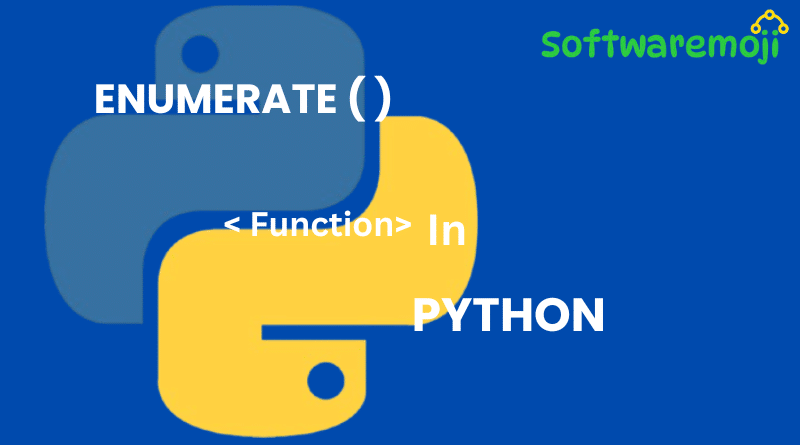
👉Python Enumerate() Function: Complete Guide with Examples
Python Enumerate() Function: The enumerate() function in Python is a powerful built-in feature that simplifies looping by adding a counter to iterable objects. It efficiently tracks indexes while iterating over lists, tuples, dictionaries, and strings.
👉What is Python Enumerate()?
Python Enumerate() Function : The enumerate() function takes an iterable object and returns an enumerate object with a counter assigned to each item. This makes it easier to track index positions during iteration.
👉Python Enumerate() Function Syntax
python
enumerate(iterable, startIndex)
👉Parameters:
- iterable: The object you want to loop through (e.g., list, tuple, string, etc.).
- startIndex (optional): The starting count value. By default, the counter starts from 0.
👉Return Value:
Returns an enumerate object containing pairs of index and corresponding values.
👉Examples of Python Enumerate()
👉1. Using enumerate() with a List
python
mylist = [‘A’, ‘B’, ‘C’, ‘D’]
e_list = enumerate(mylist)
print(list(e_list))
👉Output:
css
[(0, ‘A’), (1, ‘B’), (2, ‘C’), (3, ‘D’)]
👉2. Using enumerate() with a Start Index
python
mylist = [‘A’, ‘B’, ‘C’, ‘D’]
e_list = enumerate(mylist, 2)
print(list(e_list))
👉Output:
[(2, ‘A’), (3, ‘B’), (4, ‘C’), (5, ‘D’)]
css
👉3. Looping Over an Enumerate Object
python
mylist = [‘A’, ‘B’, ‘C’, ‘D’]
for i in enumerate(mylist):
print(i)
print(“Using startIndex as 10”)
for i in enumerate(mylist, 10):
print(i)
👉Output:
vbnet
(0, ‘A’)
(1, ‘B’)
(2, ‘C’)
(3, ‘D’)
Using startIndex as 10
(10, ‘A’)
(11, ‘B’)
(12, ‘C’)
(13, ‘D’)
👉4. Enumerating a Tuple
python
my_tuple = (“A”, “B”, “C”, “D”, “E”)
for i in enumerate(my_tuple):
print(i)
👉Output:
arduino
(0, ‘A’)
(1, ‘B’)
(2, ‘C’)
(3, ‘D’)
(4, ‘E’)
👉5. Enumerating a String
python
my_str = “Python”
for i in enumerate(my_str):
print(i)
👉Output:
arduino
(0, ‘P’)
(1, ‘y’)
(2, ‘t’)
(3, ‘h’)
(4, ‘o’)
(5, ‘n’)
👉6. Enumerating a Dictionary
python
my_dict = {“a”: “PHP”, “b”: “JAVA”, “c”: “PYTHON”, “d”: “NODEJS”}
for i in enumerate(my_dict):
print(i)
👉Output:
arduino
(0, ‘a’)
(1, ‘b’)
(2, ‘c’)
(3, ‘d’)
👉Advantages of Using Enumerate in Python
✅ Simplifies tracking index values in loops.
✅ Efficient alternative to using list.index() in loops.
✅ Reduces the need for manual counter management in iteration.
✅ Supports multiple data structures like lists, tuples, dictionaries, and strings.
👉Summary
The Python enumerate() function is an essential tool for developers working with iterable objects. By combining both index tracking and iteration, it offers a cleaner and more efficient way to manage data structures. Mastering enumerate() can significantly improve your coding efficiency in Python.
